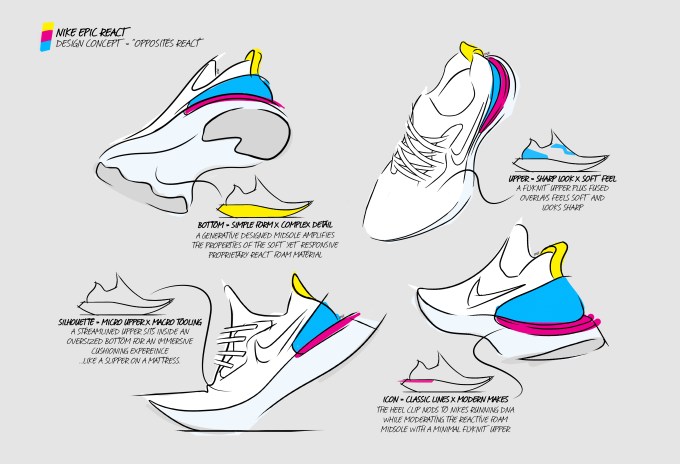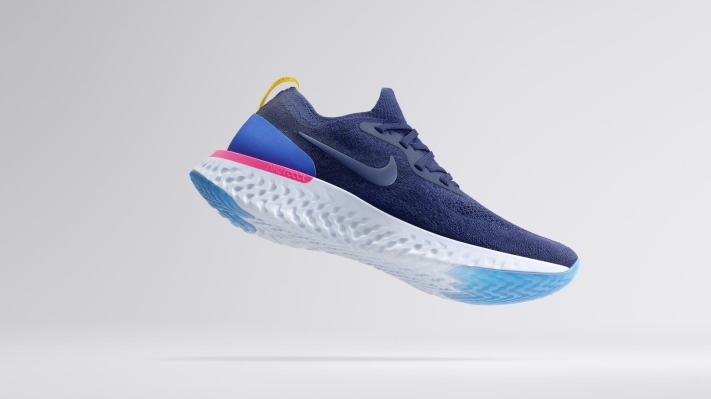Nike just announced their first shoe with an all-foam sole powered by a new foam technology called React.
The shoe is called the Nike Epic React Flyknit and is a running shoe, which will release on February 22nd. The bottom is a solid piece of foam with a knitted upper, making it lightweight for running. But looking beyond this shoe the technology is likely the start of a new generation of Nike shoes with all-foam bottoms.
The foam technology itself is called React and was launched last year in a Nike basketball shoe – but that shoe encased the foam with an outer layer in order to provide the traction and and stability that basketball players require on the court. This new shoe is the first release where the bottom is a single piece of foam without any encapsulation or casing – meaning you’re essentially running directly on a giant cushion.
So what are the benefits of a foam sole? It essentially gives each step a bounce, meaning the foam literally is squeezed when your foot hits the ground then springs back to shape, propelling your foot up so you can take another step.

Of course foam shoes are all the rage right now when it comes to performance (and style). Adidas launch their foam sole technology called Boost a few years ago and now uses it in shoes ranging from preference running shoes to Yeezys.
One other interesting aspect of the new shoe: Nike is also using proprietary algorithms to create a unique surface geometry on the foam for each size shoe. Traditionally shoe manufacturers will take one sample size (10 for men and 8 for woman) and design that shoe for maximum performance, then have the manufacturer add or subtract a little material to make different sizes.
This cuts down on optimal performance since only someone who happens to be the sample size is getting a shoe that’s perfectly designed to maximize performance; everyone else’s size is being made slightly longer or shorter. But instead the foam in the new React Flyknits are custom made for each size – meaning the geometry is algorithmically and proportionally scaled up and down – so each size is perfectly designed to maximize performance and no two sizes will have the same sole texture and design.
Nike says that they tested React technology in more than 17,000 miles of running. And it shows. The shoe I tried was extremely bouncy, and gave a return that was at least as bouncy as any Adidas Boost alternative, if not more so. Nike hasn’t given any specific comparisons to other brands but does say that the React foam delivers 13 percent greater energy return when compared to their last version of Nike Lunarlon foam, which is a foam core encased in a foam casing.
The shoe will set you back $150 when it launches next month.
